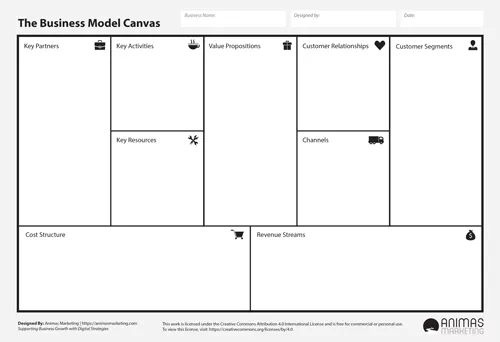The online landscape moves quickly, as do web design standards. Not only will the same old design get boring eventually, but it will also start to show its age compared to the competition. That’s why you need to keep it fresh — and simple tweaks can make a world of difference.
That’s a good thing, too, because the average webmaster doesn’t have a ton of time to spend working on their site.
They have countless other things to focus on. But what simple tweaks are going to make the most impact, and how simple are we talking? Well, in this piece, we’re going to look at 6 tactics for sprucing up your website that can be carried out within a week.
That means no plotting out a long-term strategy, no struggling to find a way to allocate a budget, and no getting distracted midway through an attempt to make something better. Each of these actions can be started and finished in one sitting — and that’s the best way to handle them.
So, enough prelude. Let’s get to the tactics for mixing up your web design in a week:
Change your colors
Even if you don’t buy into the bolder claims of color psychology, and don’t — for instance — associate purple with royalty, or yellow with emotion, you can’t deny that you quickly notice the colors used on a website you visit.
When you first arrive, you make a subconscious assessment about what you see. If it doesn’t fit (in your view), you’ll remember it.
Because of this, one of the fastest and easiest ways to adjust your website design is to change your color scheme.
You can swap out for a different shade of what you already have, alter just one of the multiple colors you feature, or replace your entire color scheme with something new. The site will end up looking totally different, all for very little effort planning and executing.
Choose a new theme
Every modern CMS supports themes, and unless you run a website large enough to have a fully-custom design, your website inevitably runs on a selected theme (with some minor alterations). This is useful because you can easily swap your current theme for a new one. Everything from your font to your layout will change, and you’ll barely need to do anything.
All you need to do is find the theme store for your CMS (or find a third-party theme website: for instance, a site like ThemeForest is fantastic for WordPress themes), find something you think looks good, and install it.
There may be some minor issues, but nothing you can’t resolve fairly rapidly — and in the unlikely event that the theme just doesn’t work properly with your site, you can simply go back to the old one.
Refresh your images
Visuals are important. They catch the eye (particularly on mobile devices, or when content is shared through social media channels), they space out your content, and they communicate elements faster and more effectively than your text ever can.
They also get the point across no matter what language the site visitor speaks, which can be useful.
Take a look at your homepage and start browsing your site. What images do you offer? Is your logo crisp and high-resolution? Are your main points illustrated meaningfully?
If there are image-free gaps that you think could use filling, throw in whatever suitable images you have (if you don’t have any, there’s no major problem with using available stock images — better those than empty space).
There are many great high-quality free stock photo sites available to start mixing up new ideas into your website design. Pikwizard is one of the few leaders in offering free stock photos without any hidden fees.
Having multiple photo sites in your online library will give you multiple options to work with. If you are looking for different sites to work with, then build a list of the best sites for free stock photos.
Where you already have stock images, either put in fresh ones or swap them out for custom images. It’s very likely that you have a smartphone with a capable camera, so take a large selection of photos pertaining to your business, then pick the best ones to showcase.
Clear up your layout
Adding to or subtracting from your list of navigation options can take time, but you might not need to make changes of that severity to make it easier for users to get around your site: you might simply need to make your layout elements slightly clearer.
For example, the addition of a subtle directional arrow at the bottom of a page can make it significantly clearer to new visitors that they can scroll down to see more content (this isn’t always obvious).
You can also do things like highlight the most popular buttons or menu options: you can change their background colors or bold their text to achieve this.
If your analytics tell you that some of your best pages are getting comparatively few visits, it may be that the menu links are being missed, so this could have a surprisingly-weighty impact on performance.
Rework your copy
The text on your website factors heavily into its design. It directs attention throughout the site, either doing a good job of keeping interest or — if written poorly — pushing people away.
Even supposing that you’re currently fairly happy with the copy on your website, that doesn’t mean you can’t improve it, and it certainly doesn’t mean you can’t rework it slightly.
Across your site, review the copy, imagining that you’re a first-time site visitor. Your goal is to make it at least slightly better — more concise, and definitely more effective.
Don’t be afraid to remove copy.
If there’s a sentence on your homepage that doesn’t offer anything useful (whether through being informative or entertaining), then remove it.
Pick a new heading
Think carefully about how site visitors might respond to your homepage heading — the area above the fold.
Does it accurately represent what your site offers? Get to the point without overstaying its welcome? Or maybe it feels a little outdated to you now because you designed it at a totally different time of the year (or back when your business was slightly different).
You could change your page title, revamp your slogan, change your featured image, add some whitespace to space things out… how exactly you achieve this goal is up to you, but it warrants a mention in particular because the heading is vitally important when it comes to organic or PPC traffic.
When someone clicks on a link to your page, they’ll expect the content of the page to match what they clicked on — if your homepage doesn’t currently match your SERP listings and your PPC ad copy, then you have a major problem.
You could plausibly implement all these changes within a day, so you can certainly get them done within a week without breaking a sweat. Once you’ve worked through them all, track your website’s performance and reach out to visitors to see what they think about the difference.
Do they prefer the new version, or the old version? Either way, you can learn something new, and use that feedback to keep improving your site.

Free Business Model Canvas

Free Business Model Canvas
Is Your Business Being Found Online?

Free Digital Marketing Report ($150 Value)
Want to know how your business stacks up against the competition?








0 Comments